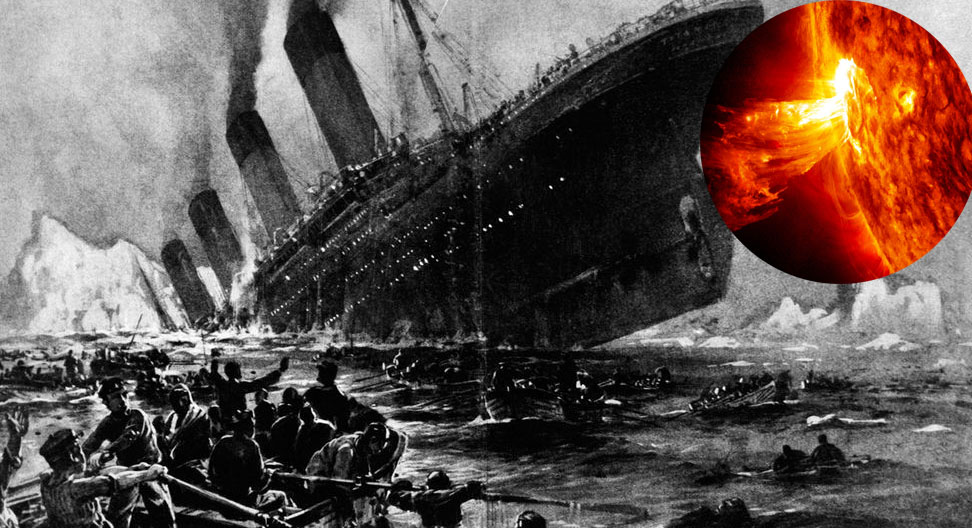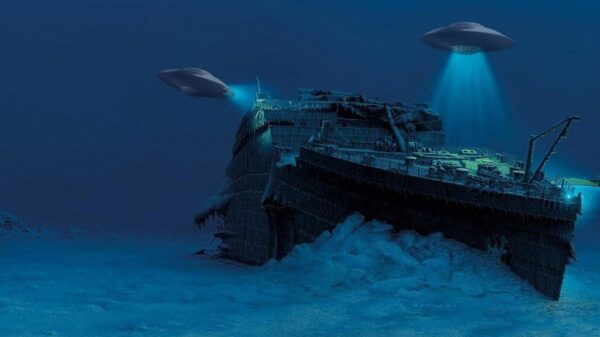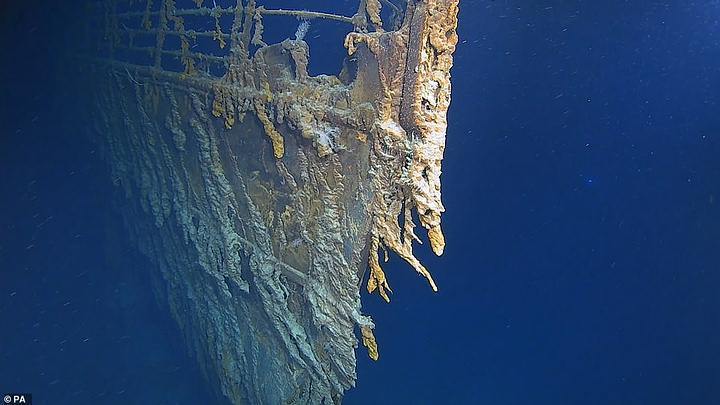The flare on the Sun caused a geomagnetic disturbance that could affect the operation of navigation instruments and led to a fatal change in the course of the liner.
For more than 100 years of studying the most famous maritime disaster in the history of mankind, researchers have come to the conclusion that the sinking of the Titanic is the so-called “perfect shipwreck”. That is, an event that happened as a result of the confluence of as many fatal circumstances that you can think of. Here are just a few of them:
– In January 1912, the Earth and the Moon approached at a record close distance (such an arrangement of celestial bodies has not been observed for the last 1400 years), maximizing the tidal forces of the ocean. As a result, icebergs that broke away from Greenland, which usually ran aground near the island of Newfoundland, were raised by abnormally high tides and anticyclones drove them south to the areas of the transatlantic shipping route. On April 14, one of them was on the way of the Titanic.
“The fateful night was moonless, which drastically reduced visibility. And, most importantly, the lookout did not have binoculars: the key to the safe with binoculars remained with David Blair, the second mate. A few days before going to sea, Blair’s services were refused (they took a more experienced officer) and the sailor, in the confusion, forgot to give the key to the safe to his replacement. As a result, a block of ice was noticed when it was 670 meters away. It is said that shortly before the collision, the iceberg turned over and a dark underwater part protruded above the water, which could not be seen from afar at night.
– The designers claimed: the ship will remain afloat even if 4 bow or stern compartments are flooded (the liner was divided into 16 watertight compartments). Therefore, in the event of a head-on collision with an iceberg, the Titanic would not have died. However, trying to evade, the first mate William Murdoch made an unsuccessful maneuver – the liner got used to the ice block tangentially and the seams between the steel sheets parted for 90 meters. Water poured into the five bow compartments. The designers of the “unsinkable” ship could not have foreseen such a scenario.
“Four hours before the meeting with the iceberg, Titanic radio operator Jack Phillips received a warning about difficult ice conditions from his colleague on the steamer“ Californian ”Cyril Evans. “Californian” was going 50 kilometers ahead of “Titanic” came across a powerful ice field. Cyril Evans transmitted a radiogram on board the Titanic “Ice between 42 ° and 41 ° 25’N and 49 ° 30’W. We saw a large accumulation of broken ice and many large icebergs. There are ice fields too. The weather is good and clear. ” But the radio operators did not give this radio message to the captain. They were busy transmitting private radio messages from passengers.
“10 minutes before the crash, Cyril Evans began transmitting to Jack Phillips a new radiogram. He wanted to report that the Californian was stopped by ice and drifted to avoid a collision. But he began the message with an informal greeting “Hello, old man! …”. Phillips, who thought Evans wanted to chat out of boredom, interrupted him with the words: “Shut up, I’m working!” The Titanic continued to rush forward at a top speed of over 40 kilometers per hour. At 11:30 pm Evans turned off the radio and went to bed. At 23.40, the Titanic hit an icy rock. After another 25 minutes, Phillips sent a distress call. The Californian was the closest ship to the Titanic, it was 32 kilometers away and could come to the rescue within an hour while the liner was still afloat. But Evans was the only person aboard the Californian who knew Morse code. The captain woke him up only at 4.30, when he was once again reported that some ship had been giving incomprehensible signals with light flares all night. Evans went on the air and learned that while he was sleeping, the Titanic sank (it happened at 2.20 am).
But it turns out that the chain of fatal accidents does not end there. Mila Zinkova, an independent weather researcher and programmer, has published an article “The Possible Role of Space Weather in the Titanic Disaster” in the Royal Meteorological Society’s Weather magazine.
“Everyone who studies the circumstances of the sinking of the Titanic is faced with several inexplicable riddles,” Mila Zinkova writes. “In particular, the Titanic radio operators, along with the distress signals, transmitted their coordinates, which indicated a point that was 11 kilometers from the actual crash site of the liner. However, for some reason, not all ships located nearby received this radiogram. The steamer “Karpatia”, which eventually saved the survivors, followed to a false point, but came across the boats with the passengers of the “Titanic”. I think I know how to explain it. The fact is that three passengers of the Titanic and the second mate of the Karpatia, James Bisset, mention in their memoirs that they observed the northern lights that night. This indicates that a solar flare caused a powerful geomagnetic storm,
The aurora comes from the intense bombardment of the upper atmosphere by charged particles from the solar wind. In 1912, this was not given much importance. But today scientists know that powerful electromagnetic disturbances often cause more than just compasses and radio equipment malfunctioning. There are cases when a solar storm turned off military radars, and in 1972 dozens of cases of the explosion of sea magnetic mines were recorded off the coast of Vietnam.
According to Mila Zinkova, solar activity affected the operation of the Titanic’s compass, and the crew had to correct the course, deviating north from the original route. Even if the compass needle moved one degree, it made a huge difference and ultimately led to the meeting of the ship and the iceberg, the author of the study believes. But the same mistake helped “Carpathia” to save the shipwrecked. Having received false coordinates, they came to the right point, because their navigation equipment was exposed to the same effect of charged particles of the solar wind.
Of course, the solar storm is not the main cause of the Titanic crash. However, this hypothesis complements the dramatic picture of what happened and demonstrates what the most unexpected forces and phenomena can provoke an “ideal catastrophe”. For a planet that is today crammed with “securely controlled” nuclear weapons (and other weapons of mass destruction), this is a useful warning.













